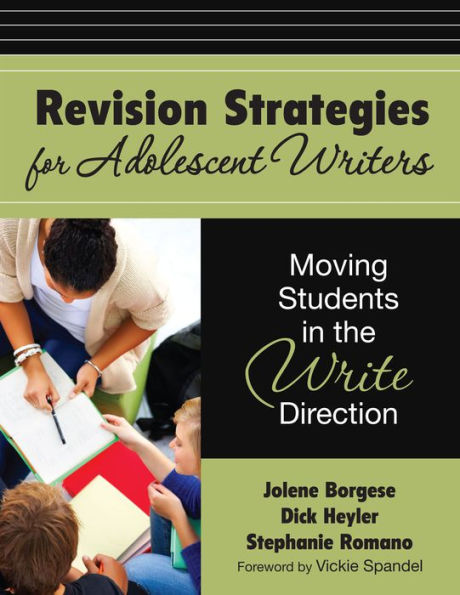Enlarge your repertoire of revision strategies!
For many secondary students, writing effectively is the most elusive of the critical literacy skills needed for college and career readiness. And for many teachers, revision is the most difficult part of the writing process to tackle. How can adolescent writers be guided to revisit their work, to identify the weaknesses in their writing drafts, and revise—making their pieces stronger and more effective? The Common Core State Standards advocate strengthening students′ writing through revision—a skill different from either drafting or editing—and using technology for creating and collaborating with others. This instructional guide, with its more than 30 flexible, classroom-tested strategies, demonstrates these practices and more:
- Frontloading (planning, rehearsing, and conversing before writing)
- Peer conferencing as part of a writers′ workshop
- Using technology to write, collaborate, and revise in and out of the classroom
- Modeling effective revision techniques as writers and teachers of writing
Teachers will turn again and again to this easy-to-use resource, with its clear explanations of strategies correlated to the 6 Traits of Effective Writing, examples of "before-and-after" student work, and thoughtful quotes from published writers about their own writing and revision processes. These authors and experienced teachers of writing have provided a handbook that can be used immediately to scaffold students′ revision and help them become more fluent, confident, and independent writers.
Enlarge your repertoire of revision strategies!
For many secondary students, writing effectively is the most elusive of the critical literacy skills needed for college and career readiness. And for many teachers, revision is the most difficult part of the writing process to tackle. How can adolescent writers be guided to revisit their work, to identify the weaknesses in their writing drafts, and revise—making their pieces stronger and more effective? The Common Core State Standards advocate strengthening students′ writing through revision—a skill different from either drafting or editing—and using technology for creating and collaborating with others. This instructional guide, with its more than 30 flexible, classroom-tested strategies, demonstrates these practices and more:
- Frontloading (planning, rehearsing, and conversing before writing)
- Peer conferencing as part of a writers′ workshop
- Using technology to write, collaborate, and revise in and out of the classroom
- Modeling effective revision techniques as writers and teachers of writing
Teachers will turn again and again to this easy-to-use resource, with its clear explanations of strategies correlated to the 6 Traits of Effective Writing, examples of "before-and-after" student work, and thoughtful quotes from published writers about their own writing and revision processes. These authors and experienced teachers of writing have provided a handbook that can be used immediately to scaffold students′ revision and help them become more fluent, confident, and independent writers.

Revision Strategies for Adolescent Writers: Moving Students in the Write Direction
152
Revision Strategies for Adolescent Writers: Moving Students in the Write Direction
152Related collections and offers

Product Details
| ISBN-13: | 9781452296456 |
|---|---|
| Publisher: | SAGE Publications |
| Publication date: | 11/08/2011 |
| Sold by: | Barnes & Noble |
| Format: | eBook |
| Pages: | 152 |
| File size: | 3 MB |
